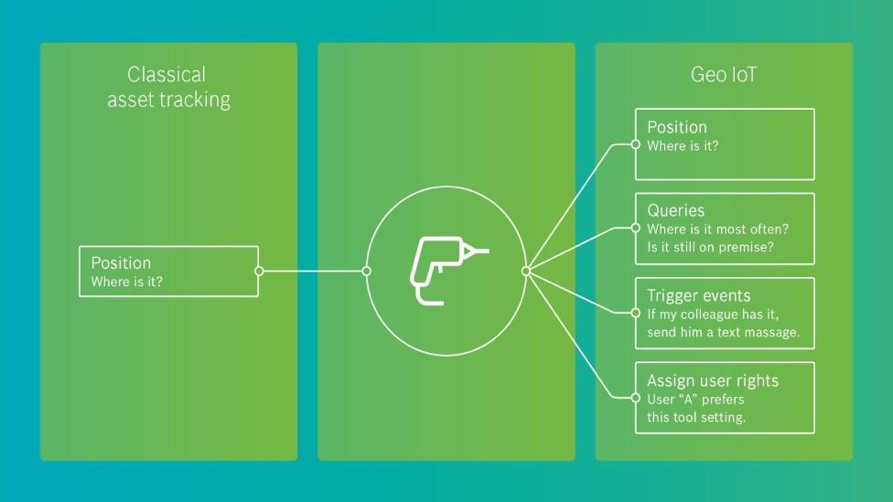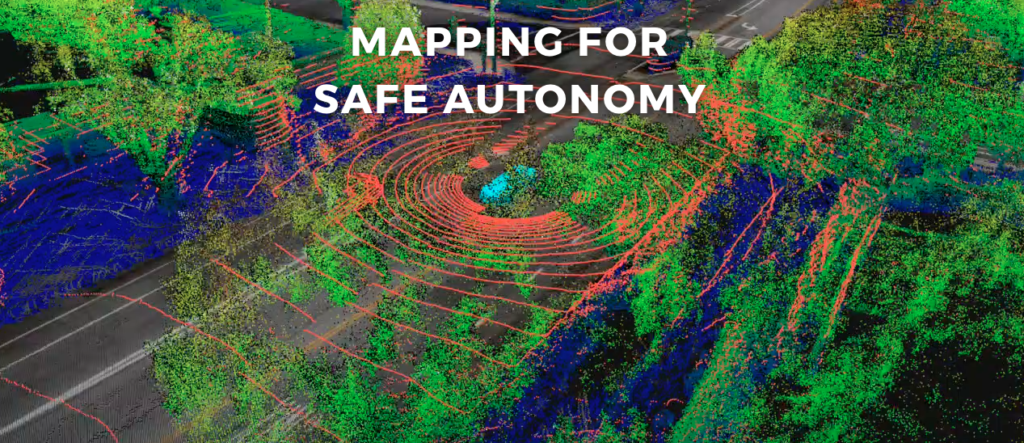
Inside Geo IoT: Intelligent geolocation of assets and people
The ability to determine our location (outdoors) in a precise way is an integral part of our daily lives. We use it to navigate, to know how long it’s going to take for your Uber to arrive, to send our location, businesses use it to track their assets and countless other tasks that we do a daily basis with location.
Location determination has been the fundamental force behind many businesses of our age. It’s hard to imagine Uber’s existence without the ability to precisely know the location of their customer and the driver. Uber does asset tracking at scale!
The benefits of having the same ability indoors are unmistakable. Indoor localization (and tracking) has been a developing industrial sector for many years now. Apple and Google invested heavily in their Beacon standards and in combination with Internet Of Things, they aim to transform our retail shopping experience. A lot has been said and written about how Beacons are going to change our lives as customers. But what about industrial applications? How are companies leveraging location determination in their workspaces?
Internet of Things and Location
We are living in an era that many are terming as the Fourth Industrial Revolution – a time where many of the devices in our lives are now connected to the internet. Internet Of Things isn’t simply about connecting all our devices to the internet. Sure, a lot of times that’s how it feels when you read about internet-connected toasters (a concept that I can’t understand, but if you do, please drop me a line. I digress.. Back to the main topic).
Leaving aside all the PR-fuelled ideas, IoT has serious industrial applications. Revenue from IoT software services alone is predicted to reach $379 billion by 2021. Just like traditional devices/applications benefitted from location determination, it’s not hard to imagine, location data making a big difference with IoT as well. In fact, Research and Markets predict that revenue from Geo IoT will reach $49 billion by 2021.
Just as location determination has become an essential element of personal communications, so shall presence detection and location-aware technologies be key to the long-term success of the Internet of Things (IoT). Geo IoT will positively impact many industry verticals. – Research and Market report about “Geo IoT Technologies, Services, and Applications Market Outlook: Positioning, Proximity, Location Data and Analytics 2016 – 2021.”
What is Geo IoT?
What exactly is Geo IoT and what are the current applications of Geo IoT in the industry? A quick search for “Geo IoT” on Google returns about 568.000 results! Okay, I could either read about a dozen articles about the topic or just ask someone who works on it every day! Luckily for me, the good people at Bosch Software Innovations, one of the companies mentioned in the Research and Markets report, were more than happy to talk about it. Here is the excerpt of the free flowing conversation I had with Johanna Konrad-Mausser, who is a product manager within Bosch Software Innovations GmbH.
Geo IoT as a concept
In classical asset tracking, one just tracked the location of the asset. With Geo IoT, we are not only tracking the location of the asset but also the status of the asset (or person).
https://youtu.be/rj5dd-aXRu4?t=11s
Imagine, an aircraft hangar where Aircrafts are serviced and maintained. Misplacing a power tool in a place like this is going to cost several minutes of productivity and possibly going to delay your vacation as well. It’s one thing to simply add a tracker to such a device and it’s another to be able to retrieve additional information about it i.e. how often is it being used, who was the last person to use it, etc. That’s Geo IoT in a nutshell (or at least it is one way to define it 😉

Classical asset tracking vs Geo IoT (Image credits: Bosch Software Innovations )
Geo IoT as a service
Bosch Software Innovations takes care of the selecting the right location technology for the user’s needs, implements the software for their need and also offers solutions (including project management and other professional services) for the customers’ Geo IoT projects.
“One of the most important aspects of delivering a Geo IoT application has been identifying the user’s needs, their business value and finding the right technology for it” Johanna mentions. “Quite often the application that the user has in mind does not require centimeter level accuracy that some of the indoor localization technologies offer” she adds.
“We are currently evaluating how hospitals could benefit from Geo IoT. Obvious use cases are locating equipment and patient tracking. We are starting to discuss our ideas with hospitals to identify use cases that deliver significant benefit.”
The hospital use case is a good example of an application that doesn’t require centimeter level positioning but certainly, needs to be able to tell you accurately on which floor (and room) the asset and patients are.
https://youtu.be/UnO6WRBifls?t=15s
Positioning accuracy
Vertical accuracy is often overlooked in outdoor applications, but when it comes to indoor positioning, it is crucial. Probably the biggest challenge with indoor localization (currently) is selecting the right technology for the right use case. The environment also presents a technical challenge.
“Industrial settings are often more challenging in terms of location accuracy than other environments like hospitals and offices” Johanna replies, when I asked her about the biggest (technological) challenge with indoor positioning. “Often, in industrial settings, there are more obstructions (electronic and environmental) that make positioning more difficult than in your typical hospital or office.” A factor that impacts how the infrastructure for indoor localization will be placed and the costs as well.
Choosing the right technology
In a market that is still highly fragmented and is clearly still in the growing stages, how does a company like Bosch, go about selecting what technology to use for indoor localization?
“One of the biggest challenges facing Geo IoT is the number of technologies that are available out there for indoor localization – BLE, WiFi, Geomagnetic Sensors, ultra-wide band sensors. Each technology has its pros and cons and has different costs. We do proof of concepts to ensure accuracy before scaling the project and work closely with several different indoor localization vendors in order to get the right technology for the application” Johanna clarifies.
Geo IoT is one among the many topics that they focus on at Bosch Software Innovations. Their approach to Geo IoT is focussed mainly on helping improve the workflow of their customers and increasing their productivity. In a sense, they are going to help define the standard when it comes to indoor localization technologies and sensors. It’s easy to imagine a future where your wearable device is transmitting health data to your doctor so that you can avoid being in the hospital in the first place. In the meantime, the team is focused on making sure your stay in the hospital will be productive and less stressful for the hospital staff to handle!
Geo IoT World
Johanna is delivering a keynote on “Putting Geo IoT into Practice“ at the upcoming Geo IoT World conference in Brussels (6-8, June 2017). If you can’t make it the conference, check out their upcoming webinar on “Putting Geo IoT into practice” scheduled for May 16 and 17.
If you are interested in learning more about the topic and Bosch’s Geo IoT solutions, here are some useful links.
- Research and Markets report on Geo IoT (full-report behind paywall)
- Bosch ConnectedWorld Blog on Internet of Things
- Geo IoT homepage – Bosch Software Innovations
- How connected buildings could enrich our lives – blog by Salesforce executive




